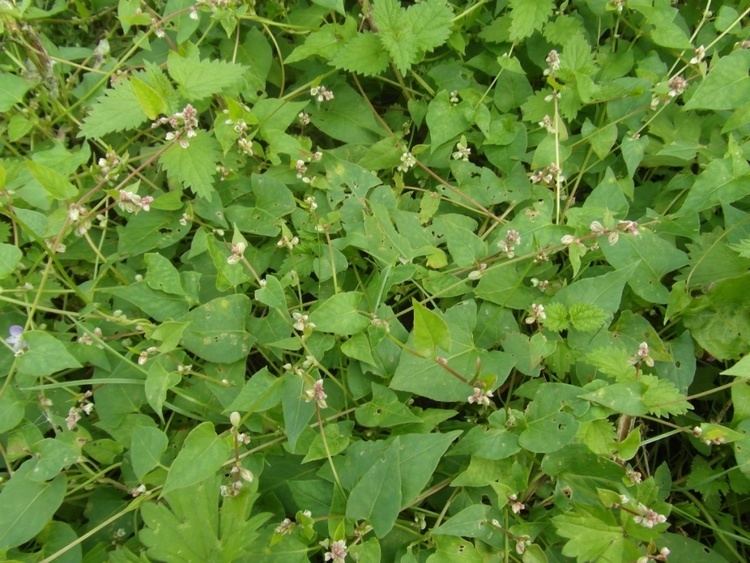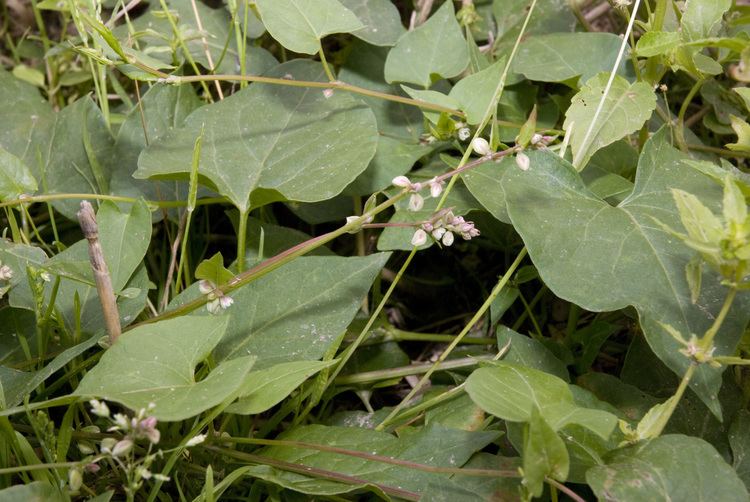Higher classification Fallopia | Scientific name Fallopia convolvulus Rank Species | |
 | ||
Similar Cleavers, Knotweed, Lamb's Quarters, Common Chickenweed, Creeping Thistle | ||
Fallopia convolvulus (black-bindweed or wild buckwheat) is a fast-growing annual flowering plant in the family Polygonaceae native throughout Europe, Asia and northern Africa. It is an arable plant.
Contents
Synonyms include Polygonum convolvulus L. (basionym), Bilderdykia convolvulus (L.) Dumort, Fagopyrum convolvulus (L.) H.Gross, Fagopyrum carinatum Moench, Helxine convolvulus (L.) Raf., Reynoutria convolvulus (L.) Shinners, and Tiniaria convolvulus (L.) Webb & Moq. Other old folk names include bear-bind, bind-corn, climbing bindweed, climbing buckwheat, corn-bind, corn bindweed, devil's tether, and wild buckwheat.

Description

Black-bindweed is a herbaceous vine growing to 1–1.5 m (39–59 in) long, with stems that twine clockwise round other plant stems. The alternate triangular leaves are 1.5–6 cm long and 0.7–3 cm broad with a 6–15 (–50) mm petiole; the basal lobes of the leaves are pointed at the petiole. The flowers are small, and greenish-pink to greenish white, clustered on short racemes. These clusters give way to small triangular achenes, with one seed in each achene.

While it superficially resemble bindweeds in the genus Convolvulus there are many notable differences; it has ocrea (stipule-sheath at nodes), which Convolvulus does not; and Convolvulus has conspicuous trumpet-shaped flowers while Black-bindweed has flowers that are unobtrusive and only about 4 mm long.
Ecology
Fallopia convolvulus grows most commonly on disturbed or cultivated land, in northern Europe typically on warm, sunny, well-drained sandy or limestone soil types, but in hotter, drier areas like Pakistan, on moist shady sites. It ranges from sea level in the north of its range, up to 3600 m altitude in the south in the Himalaya.
Cultivation and uses
The seeds are edible, and were used in the past as a food crop, with remains found in Bronze Age middens. The seeds are too small and low-yielding to make a commercial crop, and it is now more widely considered a weed, occurring in crops, waste areas and roadsides. It can be a damaging weed when it is growing in a garden or crop, as it can not only damage the plant it entwines itself around, but can also hinder mechanised harvesting. It is also an invasive species in North America.
